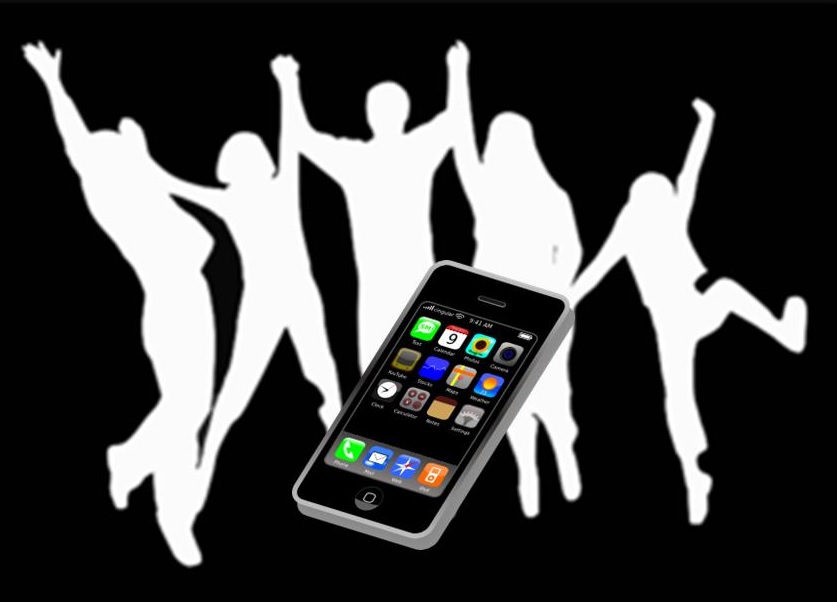The favorite apps are those that simplify retail purchasing, such as those that guide the in-store process.
The results of a new study by Parks Associates have now been released and have shown that over one in four shoppers of consumer electronic products in the United States who have broadband capable devices use mobile commerce apps on their smartphones in order to help them to make a purchasing decision.
They use a number of different features from these applications to help them to decide what is best.
Among the favorite mobile commerce app features, said the report, were functions for product research, QR code and barcode scanning, as well as apps that provide interactions with brands and the retailers themselves. The report on the research was published by Parks Associates under the title “Mobile Commerce: Keys to Mass Adoption”.
Forty three percent of American smartphone owners used mobile commerce to help buy a product in September.
 Consumers – particularly those that shopped at Best Buy, Walmart, and Target – were also noted to be beginning to use their smartphones to make purchasing decisions via mobile commerce channels while they are actually in the stores. These three brands all encourage their shoppers to use their own apps while they are within their stores. According to Parks Associates, it is Target shoppers that are most likely to use these applications while they are looking to purchase a consumer electronics product.
Consumers – particularly those that shopped at Best Buy, Walmart, and Target – were also noted to be beginning to use their smartphones to make purchasing decisions via mobile commerce channels while they are actually in the stores. These three brands all encourage their shoppers to use their own apps while they are within their stores. According to Parks Associates, it is Target shoppers that are most likely to use these applications while they are looking to purchase a consumer electronics product.
According to a Parks Associates senior analyst, Jennifer Kent, “Consumers are using apps and smartphones to enhance their brick-and-mortar shopping experience, with Target shoppers emerging as the most enthusiastic app users.” She also stated that “Our research shows 54% of Target shoppers used at least one mobile commerce app while shopping in a store for CE, while only 38% of Walmart shoppers did the same.”
The analysts behind the mobile commerce report suggested that all retailers begin to embrace the smartphone friendly experience – both with their own apps and third party products – as a method of providing consumers an enhanced overall shopping experience, as well as a front line defense against losing sales to showrooming.
A recent analysis has shown that different groups of people prefer different applications.
Onavo Insights has just released some of the results from a data analysis that it conducted on the use of mobile commerce and payments apps, which has helped to show how some of these digital products are doing, and who uses them the most.
There are already hundreds of millions of smartphones owned by Americans, but only a small percentage are used for mobile commerce.
Even fewer are used for payments. Mobile commerce is still primarily used for price comparisons as opposed to actually using the apps to purchase products or pay for goods while in store. This, despite massive efforts from industry giants that range from Google to PayPal, as well as telecom joint ventures like Isis.
As hard as these companies have been trying, mobile commerce and payments have yet to take off as seen in other nations.
 According to the app usage data collected by Onavo Insights, from several million Android and iOS users, there are certain trends that are forming. The company published some of those findings in a report that has indicated that mobile commerce and payments apps and their platforms have been growing in the United States over the last twelve months, despite the fact that other countries – particularly in Asia – are seeing much larger growth levels.
According to the app usage data collected by Onavo Insights, from several million Android and iOS users, there are certain trends that are forming. The company published some of those findings in a report that has indicated that mobile commerce and payments apps and their platforms have been growing in the United States over the last twelve months, despite the fact that other countries – particularly in Asia – are seeing much larger growth levels.
Although the company does not claim that this provides a complete image of the mobile commerce situation in the country, it does help to provide a sense of how the apps are being used across the United States.
Among the notable findings about the mobile commerce apps includes the following:
• Starbucks is by far the clear leader when it comes to mobile commerce apps as it is used the most out of any payments app but it is also used for the free download of songs and apps, to locate shop locations and to view the menus at those cafes.
• As slow as the uptake may have been in the U.S., it is happening and millions of dollars in transactions are being completed through mobile payments apps. That said, among the estimated $500 million in transactions over mobile commerce apps last year in the United States, the “vast majority” occurred by way of the Starbucks offerings. This according to Berg Insights data.
• Venmo is starting to show a strong growth even though it remains a small product, as this mobile commerce app’s young audience doubled its use in June. Its primary use is in a much younger crowd, which is different from Starbucks and PayPal where the average age is 25 to 34.
• Men use mobile payments more as a whole, but the mobile commerce app at Starbucks was an exception, where women made up 54 percent of users. The lowest percentage of females was at Square Wallet, at 21 percent.
 Consumers – particularly those that shopped at Best Buy, Walmart, and Target – were also noted to be beginning to use their smartphones to make purchasing decisions via mobile commerce channels while they are actually in the stores. These three brands all encourage their shoppers to use their own apps while they are within their stores. According to Parks Associates, it is Target shoppers that are most likely to use these applications while they are looking to purchase a consumer electronics product.
Consumers – particularly those that shopped at Best Buy, Walmart, and Target – were also noted to be beginning to use their smartphones to make purchasing decisions via mobile commerce channels while they are actually in the stores. These three brands all encourage their shoppers to use their own apps while they are within their stores. According to Parks Associates, it is Target shoppers that are most likely to use these applications while they are looking to purchase a consumer electronics product.
 According to the app usage data collected by Onavo Insights, from several million Android and iOS users, there are certain trends that are forming. The company published some of those findings in a report that has indicated that mobile commerce and payments apps and their platforms have been growing in the United States over the last twelve months, despite the fact that other countries – particularly in Asia – are seeing much larger growth levels.
According to the app usage data collected by Onavo Insights, from several million Android and iOS users, there are certain trends that are forming. The company published some of those findings in a report that has indicated that mobile commerce and payments apps and their platforms have been growing in the United States over the last twelve months, despite the fact that other countries – particularly in Asia – are seeing much larger growth levels.